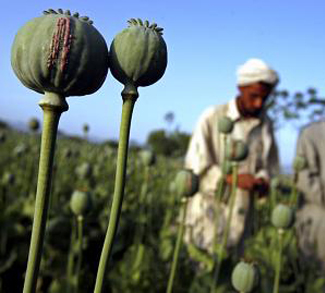Costa Rica has long been perceived as a beacon of peace and stability in Central America, partly due to its decision to abolish its military in 1948. However, this peaceful image is being overshadowed by the country’s emerging role in narcotics trafficking. Historically a transit point, Costa Rica is now increasingly caught in the net of transnational drug trafficking operations due to escalating cartel violence amid an influx of support by international criminal organizations based in Mexico and Colombia.
The shift is being driven by Costa Rica’s strategic geographic location and its’ comparatively lax maritime security, which allows for greater access to shipping ports and easier maneuverability for small vessels, mostly fishing boats, to engage in trafficking. As a result, crime in Costa Rica has been marked by a significant rise in drug-related homicides and the empowerment of well-armed local criminal groups engaged in the battle for territory and control of the narcotics trade.
Costa Rica and the Narcotics Supply Chain
Costa Rica’s central position in the isthmus connecting South and North America renders it an attractive route for smuggling. The country’s extensive coastlines on both the Pacific and Caribbean seas provide a myriad of entry points for drug shipments, especially the Eastern province of Limon, which borders Panama to the south and Nicaragua to the north. The country’s tourism sector also provides a lucrative market for domestic narcotics sales to upper-income tourists, most of whom travel from North America and Western Europe. Drug consumption by locals is also exacerbated by increased trafficking, with crack cocaine steadily climbing in use by Costa Ricans and slowly displacing cannabis as the traditional drug of choice.
Historically, Costa Rica has been viewed as an insignificant transshipment point and hideout for both Mexican and Colombian cartels. Mexican drug cartels, notably the Sinaloa Cartel, have been instrumental in waging a proxy war by arming Costa Rican gangs. Furthermore, the influence of Colombian criminal groups, including the Revolutionary Armed Forces of Colombia (FARC), which had a sizable role in Colombia’s drug trade prior to its disarmament and demobilization, has enflamed competition in Costa Rica. Colombian drug trafficking organizations have replicated similar expansion effort in the past in Venezuela and Ecuador.
These transnational groups have not only used Costa Rica as a warehousing operation but have also established bases in the country, arming local gangs and integrating them into their logistics network. Notably, these criminal entities are increasingly engaging in direct drug purchases from Mexico and Colombia, financing themselves through ostensibly legitimate businesses, and expanding the scope of their criminality to include synthetic drug production, contract killing, and human trafficking. Proceeds from the drug trade are also entwined with the Costa Rican economy through money laundering, especially in its’ real estate sector.
Costa Rica’s efforts to combat drug trafficking are further complicated by strained political relationships with neighboring countries such as Nicaragua and Honduras. In recent years, Costa Rica has seen an influx of migrants and refugees from Nicaragua, and the two countries remain entangled in a long-standing territorial dispute, which nearly erupted into armed conflict in 2010. Last year, a short-lived diplomatic spat between Costa Rica and Honduras was ignited by Costa Rica’s concerns over its safety. In addition to drug violence, Honduras is also reeling from a damaging scandal implicating former President Juan Orlando Hernandez and his aides in state-sponsored drug trafficking during his government.
The public perception of security in Costa Rica has deteriorated significantly, with crime being seen as the predominant electoral issue. The socio-economic conditions exacerbated by the COVID-19 pandemic have led to higher unemployment and growing social discontent, which in turn facilitates gang recruitment and breeds an illicit economy. The ramifications of increasing crime rates and drug-related violence in Costa Rica is likely to hinder tourism, which contributes over 8% of Costa Rica’s GDP and nearly 9% of its’ employment.
The Security Dilemma and Exporting “Bukeleism”
Costa Rica’s lack of a formal military is a double-edged sword; while it has supported the image of a peaceful nation, it also makes Costa Rica attractive to traffickers who face less formidable resistance in asserting control. This scenario has drawn comparisons to the situation in Haiti, which abolished its military in 1995 before reinstating it in 2017 when UN peacekeepers in the country concluded their mission.
The response from the Costa Rican government, mirroring the aggressive crackdowns seen under Nayib Bukele in El Salvador—often referred to as “Bukeleism”—suggests a potential shift towards more draconian measures. However, the effectiveness of such approaches remains a point of contention given the substantial differences in political and historical contexts between Costa Rica and El Salvador. The central issue is a concern over the erosion of democratic norms and the associated human rights violations that have historically accompanied harsh crackdowns across Latin America.
Costa Rican President Rodrigo Chaves has introduced legislation that increases penalties for crimes, extends the use of preventive detention, and allows for more aggressive policing tactics. These measures mark a radical departure from Costa Rica’s traditional approach to crime prevention, and they were ultimately rejected by the Costa Rica’s Legislative Assembly. While aiming to curb immediate crime rates, the policies also raise concerns about their impact on Costa Rica’s traditionally strong democratic norms and rule of law, potentially leading to increased authoritarianism in governance. Chaves’s government has also been accused of following Bukele’s footsteps by holding private negotiations with international criminal groups, which Chaves denies and has now resulted in an official probe.
In response to the escalating drug-related violence, the Costa Rican Ministry of Public Security launched the “Secure Plus 2023-2030” plan last November. Though lacking in specific strategies to combat crime, the plan sets a criterion for safety based principally on targeted reductions in crime metrics and an improvement of public perceptions of crime. Costa Rica has appealed to the EU for security assistance and has a long-standing partnership with the United States, from whom Costa Rica has received equipment and technical support to improve surveillance and detection capabilities throughout the countries ports.




